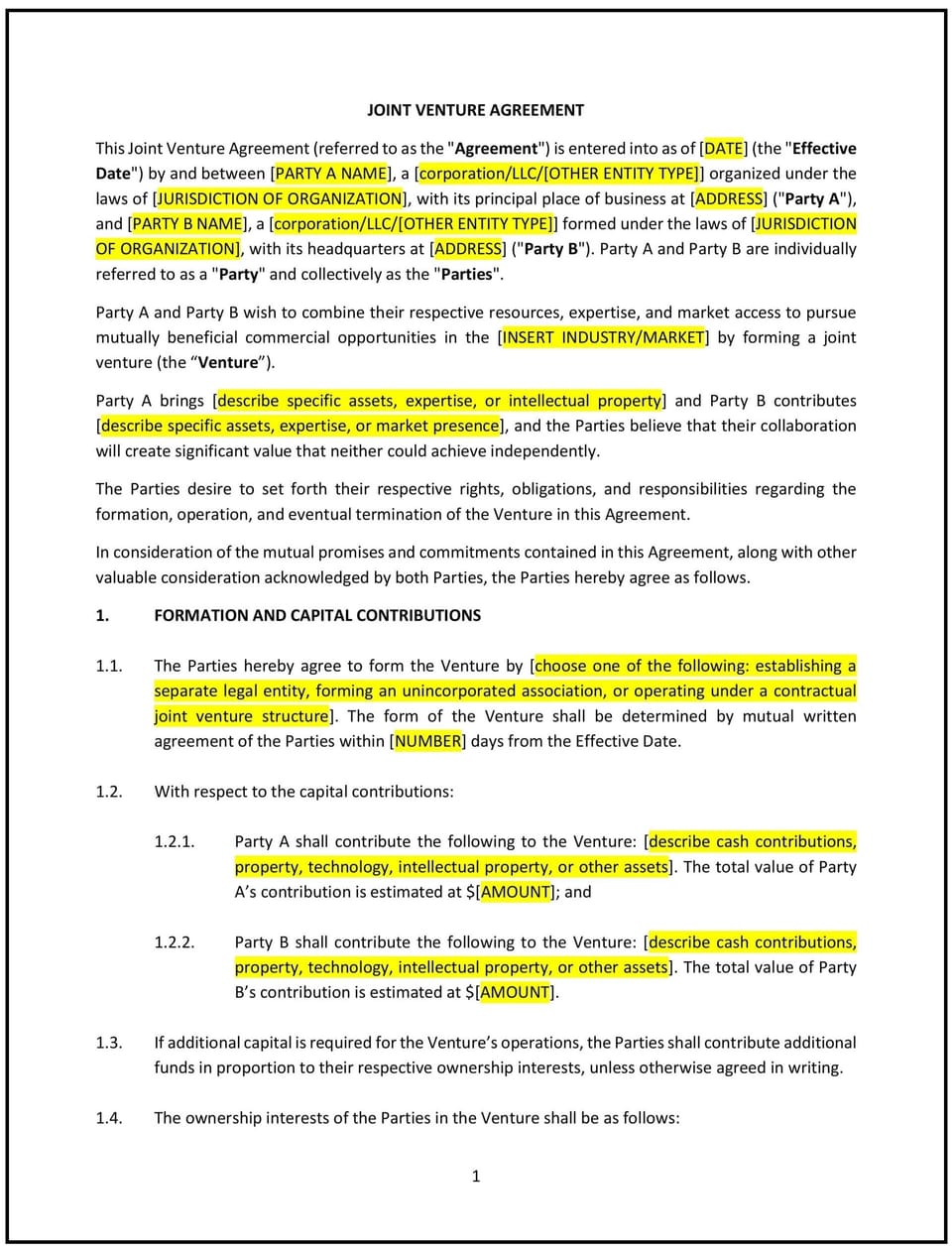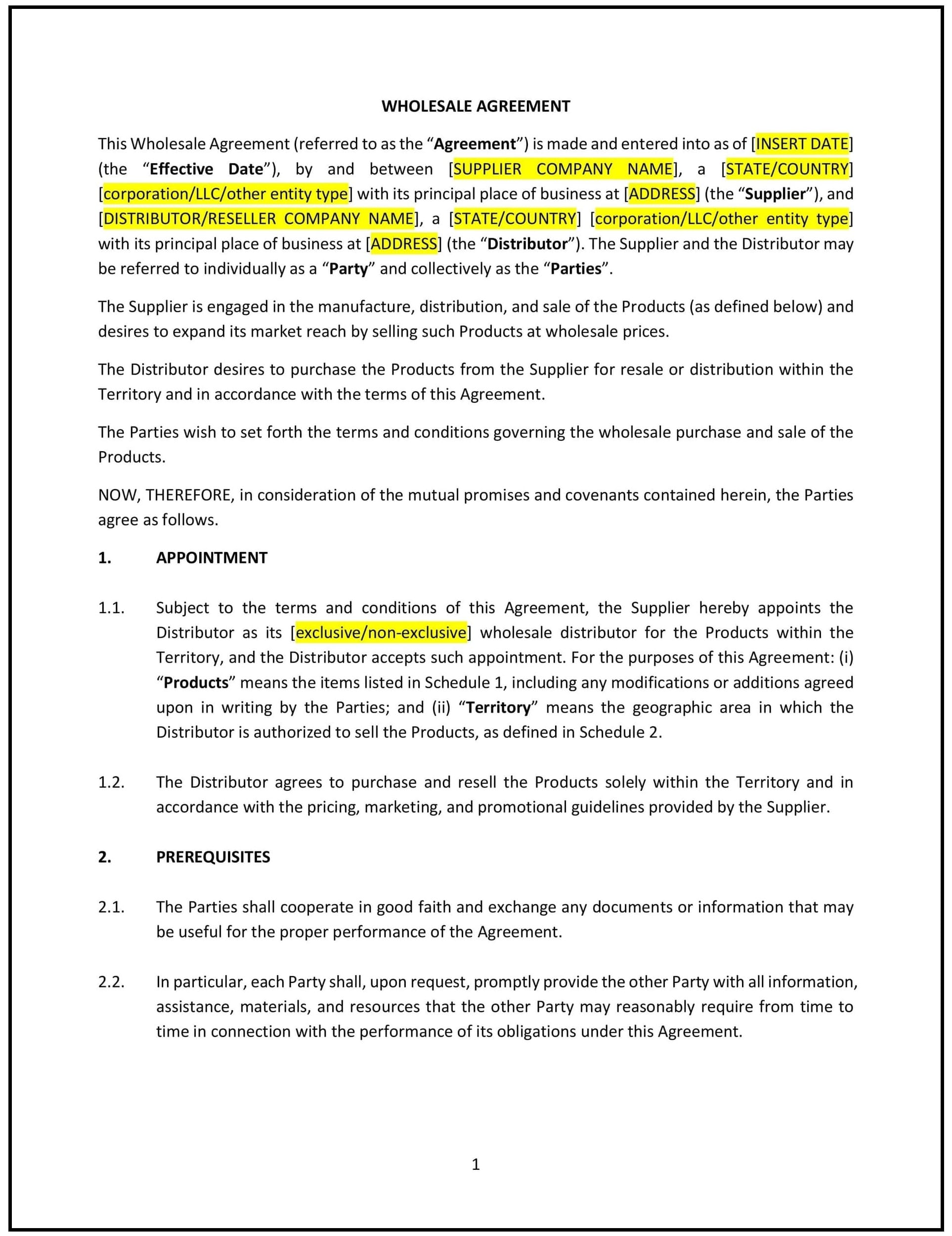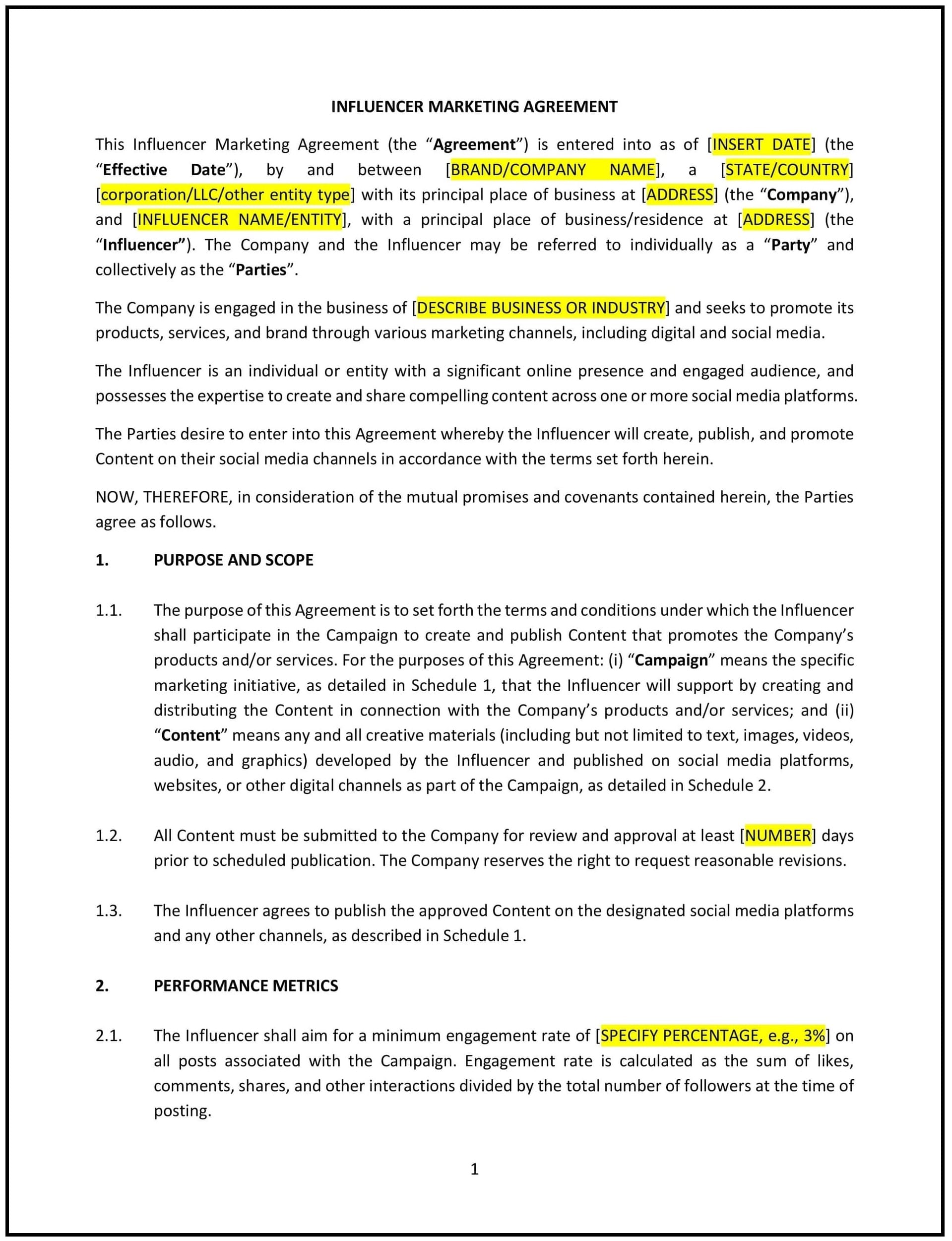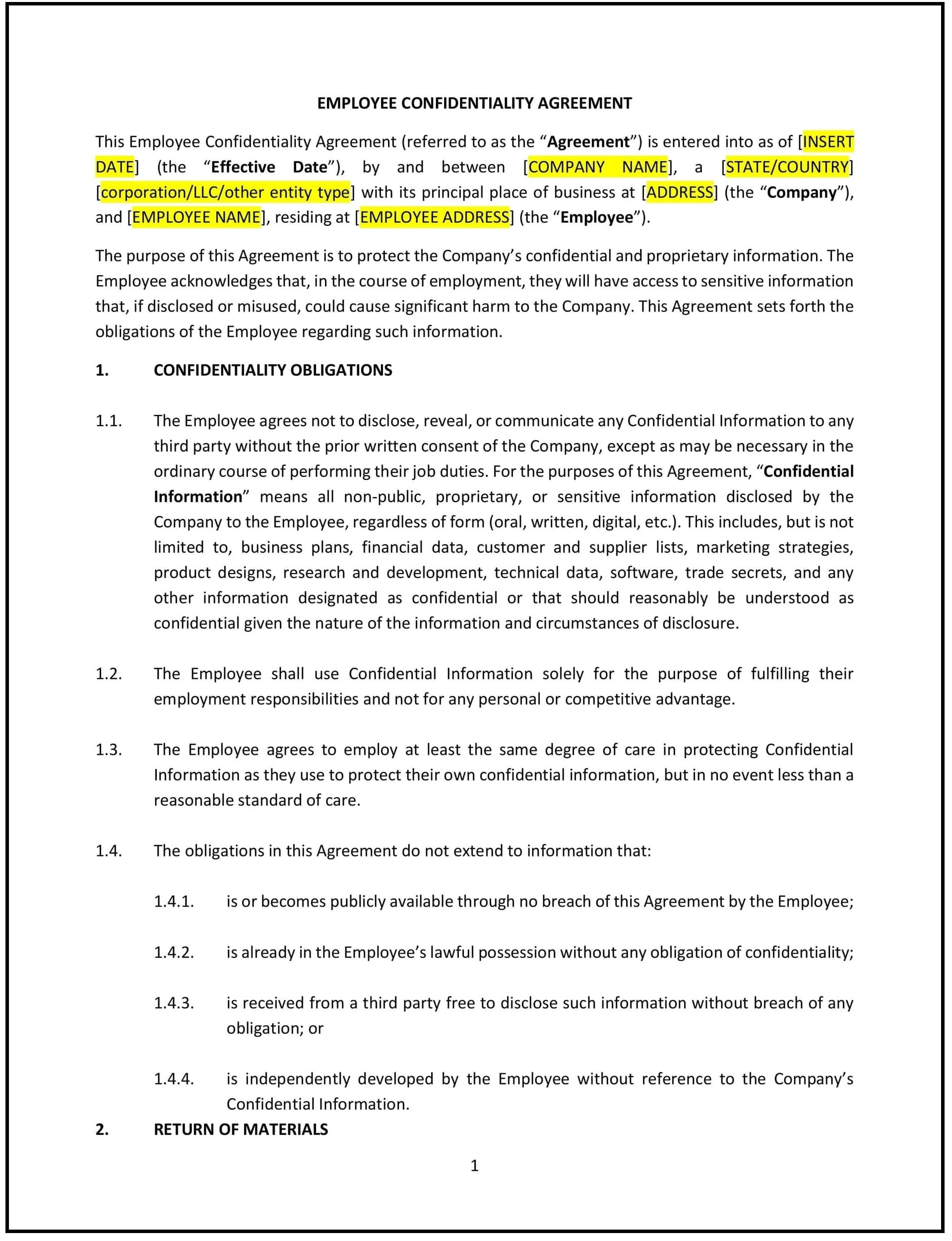Joint Venture Agreement (Ohio): Free template

Joint Venture Agreement (Ohio)
A Joint Venture Agreement is a legal document that outlines the terms and conditions under which two or more parties agree to collaborate on a specific business project or venture. In Ohio, these agreements are governed by state contract laws and must comply with federal regulations regarding fairness and enforceability. A well-drafted Joint Venture Agreement clarifies the roles, responsibilities, and expectations of all parties involved, ensuring alignment with Ohio’s legal requirements.
For example, a Columbus-based company might enter into a joint venture with a Cleveland-based partner to develop a new product line. A clear Joint Venture Agreement helps define the scope of the collaboration and minimizes the risk of future conflicts.
Tips for drafting and maintaining a Joint Venture Agreement in Ohio
- Identify the parties involved: Clearly specify the names, addresses, and roles of all parties entering into the agreement.
- Example: “This Joint Venture Agreement is entered into by [Party A Name], located at [Address], and [Party B Name], residing at [Address].”
- Define the purpose of the joint venture: Describe the reason for the collaboration and the specific goals or objectives of the venture.
- Example: “The purpose of this Joint Venture is to [specific purpose, such as develop a new product, enter a new market, etc.].”
- Specify contributions: Outline the contributions of each party, including financial investments, assets, intellectual property, or labor.
- Example: “Party A agrees to contribute [amount of capital/assets/expertise], while Party B agrees to contribute [amount of capital/assets/expertise].”
- Clarify ownership and profit-sharing: Specify how ownership, profits, losses, and liabilities will be distributed among the parties.
- Example: “Profits and losses from the Joint Venture shall be shared equally between the parties unless otherwise agreed in writing.”
- Outline management and decision-making: Define how decisions will be made, who has authority, and how disputes will be resolved.
- Example: “Major decisions shall require unanimous consent of the parties, while day-to-day operations will be managed by [specific party or designated manager].”
- Include confidentiality clauses: Protect sensitive information shared during the joint venture.
- Example: “The parties agree to keep all proprietary and confidential information related to the Joint Venture strictly confidential.”
- Address termination terms: Specify conditions under which the joint venture may be terminated or dissolved.
- Example: “This Joint Venture may be terminated by mutual agreement of the parties or upon [specific conditions, such as completion of the project].”
- Outline governing law and jurisdiction: Ensure the agreement specifies that it is governed by Ohio law and identifies the appropriate courts for dispute resolution.
- Example: “This agreement is governed by the laws of the State of Ohio. Any disputes arising under this agreement shall be resolved in the courts of [County], Ohio.”
- Include signatures: All parties must sign and date the agreement to make it legally binding.
- Example: “IN WITNESS WHEREOF, the parties have executed this Joint Venture Agreement as of the date first written above.”
Frequently asked questions (FAQs)
Q: Can a joint venture agreement in Ohio include non-compete provisions?
A: Yes, but non-compete clauses must comply with Ohio’s strict requirements regarding reasonableness, geographic scope, and duration.
Q: Are there any unique considerations for drafting a joint venture agreement in Ohio?
A: Ohio’s diverse economy, spanning industries like manufacturing, healthcare, and technology, may require tailored provisions addressing regulatory compliance and intellectual property rights.
Q: What happens if one party breaches a joint venture agreement in Ohio?
A: The non-breaching party may seek remedies such as damages, specific performance, or injunctive relief through the courts, provided the agreement is valid and enforceable.
Q: Can a joint venture agreement in Ohio include arbitration clauses?
A: Yes, arbitration clauses are commonly included to provide an alternative to litigation and streamline conflict resolution.
Q: What are some key clauses SMB owners should include in a joint venture agreement to protect their interests in Ohio?
A: SMB owners should ensure their joint venture agreement includes the following key clauses to protect their interests:
- Clear Purpose and Scope: Define the specific goals and limitations of the joint venture to avoid misunderstandings about its objectives.
- Contribution Details: Specify each party’s contributions (financial, assets, labor, etc.) to prevent disputes over who is responsible for what.
- Profit and Loss Sharing: Clearly outline how profits, losses, and liabilities will be distributed among the parties.
- Decision-Making Process: Establish how decisions will be made, whether by unanimous consent, majority vote, or designated managers.
- Exit Strategy: Include terms for termination, buyout options, or asset distribution if the joint venture ends or one party wishes to exit.
- Confidentiality and Non-Disclosure: Protect sensitive information shared during the collaboration to safeguard intellectual property and trade secrets.
- Dispute Resolution: Specify how conflicts will be resolved, such as through mediation or arbitration, to avoid costly litigation.
This article contains general legal information and does not contain legal advice. Cobrief is not a law firm or a substitute for an attorney or law firm. The law is complex and changes often. For legal advice, please ask a lawyer.


